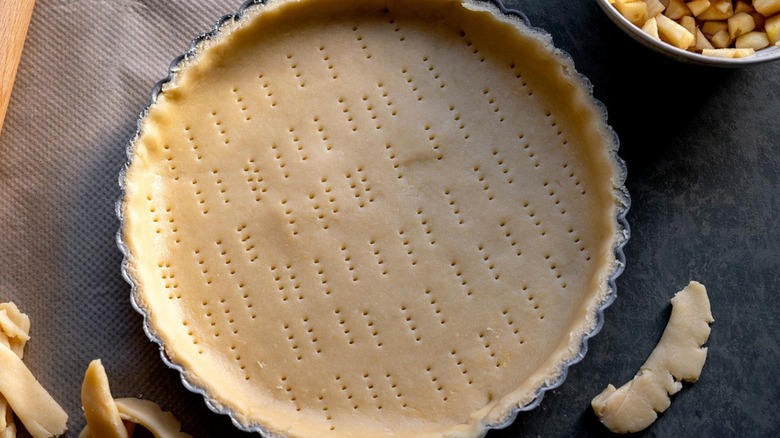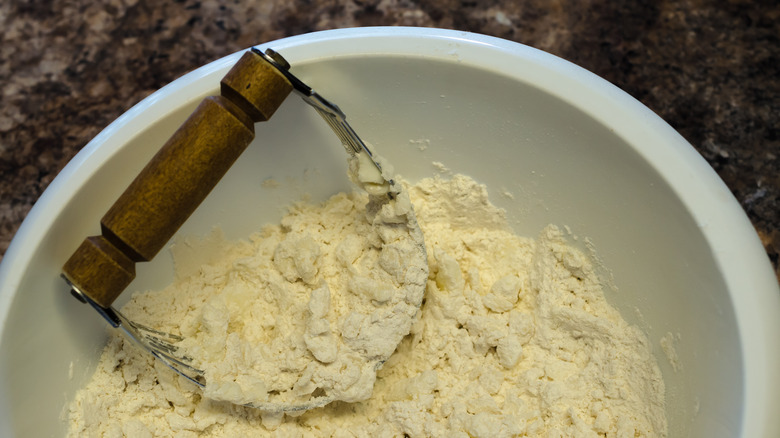The Key For Preventing Dry Pie Dough Goes Beyond Proper Measurements
One of Thanksgiving's many virtues is that we celebrate it at a slower pace; leisurely eating, naps after the meal, a little football on TV perhaps, but there are no gifts to exchange or fireworks to set up.
The food we eat at Thanksgiving is highly traditional, and while people talk a lot of turkey, most know that dessert is the star of the show. And by dessert, we mean pie. While there are many kinds to choose from like pecan, pumpkin, and apple, there's the unspoken expectation that at least one will be on the table.
Once you've made your flavor choice (or choices), there is still another hurdle to overcome — the pie dough. Pie fillings require effort, but it's a pretty straightforward task. Pie crust is another matter altogether as it should be flaky, crumbly, buttery, and almost effervescent. But that's the Platonic ideal. All too often, reality falls short because pie dough is notoriously difficult to get right (via Land O Lakes). One problem that besets many a baker is the dreaded dry crust. A dry crust lacks flavor and tenderness and fails to impress your audience.
How can you avoid a dry crust? It's best to address any issues before you start rolling out your dough since it's hard to go back once you get to that stage.
Don't overdo it
Consider your ingredients and how you measure them. One of the leading causes of dry crust is too much flour (via Eating Well). To prevent excess flour it's important to make sure you measure it right. Spoon your flour into a measuring cup before leveling it off so that it doesn't get too densely packed in the cup.
Dry crust could be a result of too little water or too little fat; too much flour overwhelms either. Butter (or another shortening) should be chilled and cut into small cubes before mixing it in. You don't want the fat molecules fully incorporated into the dough, since those little nuggets provide the flakiness (per King Arthur Baking). Some people like to freeze the butter and grate it into the dough, but you can also work the small pieces into the dough with a pastry blender (via Smitten Kitchen).
Once your butter pieces are pea-sized, it's time to lay off the mixing. But if the dough seems too dry at this stage, add a little cold water and fluff with a fork (via Land O Lakes). Easy does it though, just a little at a time. Adding too much water and overworking it will make the dough tough, which is definitely not what you're after. Once it's come together, let it sit in the fridge for a bit. Giving the dough a little time to chill will make it that much better — and isn't that true for all of us, at Thanksgiving especially?

